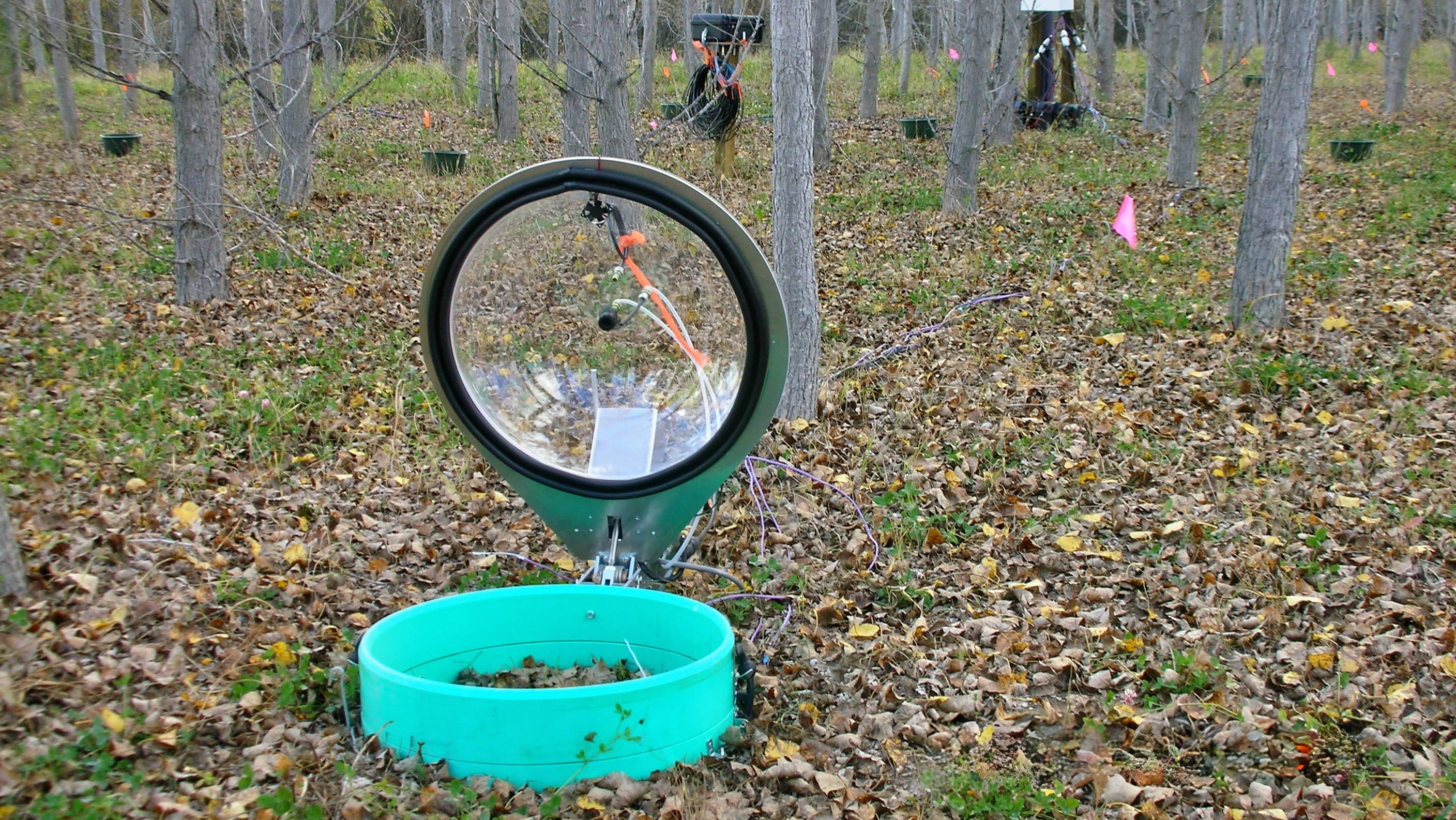Pulp mill waste destined for the landfill could instead be useful as an organic fertilizer that can help reduce the environmental impact of using conventional fertilizers while improving soil and tree growth, University of Alberta research shows.
A two-year study conducted on a hybrid poplar tree plantation in northern Alberta showed that compared with using conventional fertilizers alone, adding biosolids — wood and other fibres left over from pulp and paper production — reduced harmful greenhouse gas emissions from the soil.
Combining biosolids and conventional fertilizer also improved soil fertility, the study showed.
The findings provide new insight into what effect biosolids could have if they were redirected for use on tree plantations that feed the forest industry, says Scott Chang, the study’s lead author and a professor in the Faculty of Agricultural, Life & Environmental Sciences.
Conventional fertilizer, containing industrially produced urea, has been shown to stimulate greenhouse gas emissions from soil — particularly nitrous oxide, a major contributor to global warming. Though pulp mill biosolids are generally rich in organic content and low in toxicity, it wasn’t known how they might also have an effect, he says.
The results of the study show the potential for developing a “win-win strategy” in managing pulp mill waste, he notes.
“Repurposing biosolids as an organic fertilizer, which may help reduce greenhouse gas emissions, could improve the sustainability of the pulp and paper industry.”
On a 2.4-hectare test site of hybrid poplars, the researchers compared the effects of three different applications — biosolids, conventional fertilizer and a combination of both — on carbon dioxide, methane and nitrous oxide emissions from the soil. They also measured effects on the soil’s chemical and microbial properties.
They found that the conventional fertilizer increased soil carbon dioxide and nitrous oxide emissions by 30 and 83 per cent, respectively, while the addition of pulp mill biosolids alone increased those emissions by only 21 and 17 per cent.
But the researchers were surprised to find that the addition of the conventional fertilizer did not increase soil carbon dioxide emissions when biosolids were also applied.
“It’s possible that the applied biosolids absorb some of the mineral nitrogen in the soil initially and then later act as a slow-release fertilizer throughout the growing season,” says study co-author Xinli Chen, a Banting postdoctoral fellow in the Faculty of Agricultural, Life & Environmental Sciences.
“That results in less pronounced effects on greenhouse gas emissions compared to conventional fertilizer application alone.”
The application of biosolids, both alone and with the conventional fertilizer, also proved generally beneficial to the soil for plant growth, the study showed.
It also increased levels of dissolved organic carbon — a type of carbon that is a vital part of carbon cycling — and microbial biomass, made up of bacteria and fungi that decompose organic matter. Those changes help release nutrients into the soil.
The findings also suggest that soil micro-organisms play a key role in regulating greenhouse gas emissions, and how they “could be an underlying mechanism in different fertilization scenarios,” Chen notes.
That lays the foundation for further research into improving environmental impact, he adds.
“Understanding their effect can help develop a strategy to mitigate the negative effects of conventional fertilization, such as by influencing some specific microbes in soils.”
The study was funded by the Natural Sciences and Engineering Research Council of Canada, Alberta-Pacific Forest Industries Inc. through an NSERC Collaborative Research Development grant in collaboration with study co-author and U of A professor Barb Thomas, and the Biocap Canada Foundation. Chen’s work was also supported by a Banting Postdoctoral Fellowship, and another U of A co-author, Sarah Pattison, was supported by an NSERC Industrial Postgraduate Scholarship.
